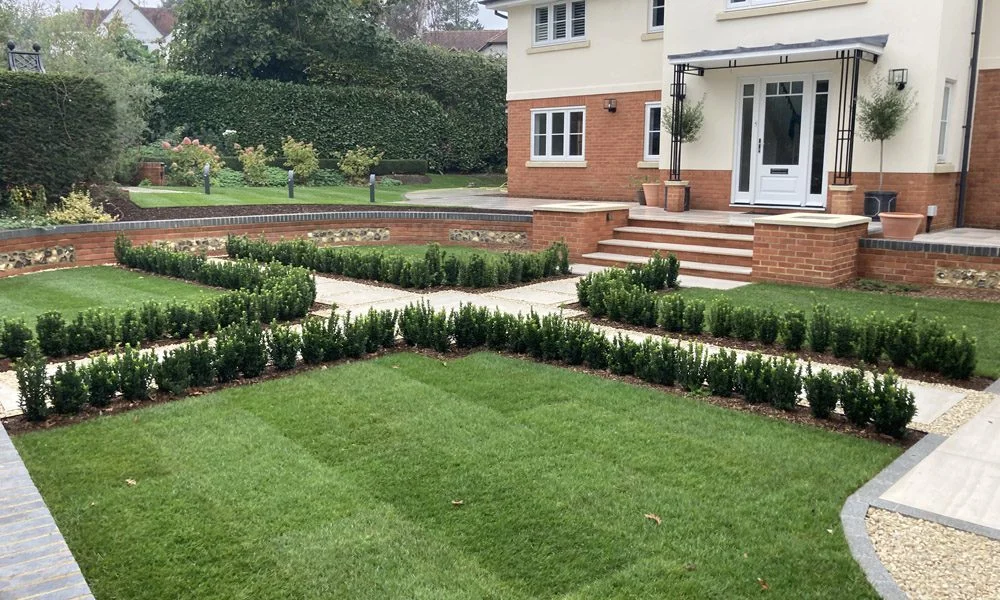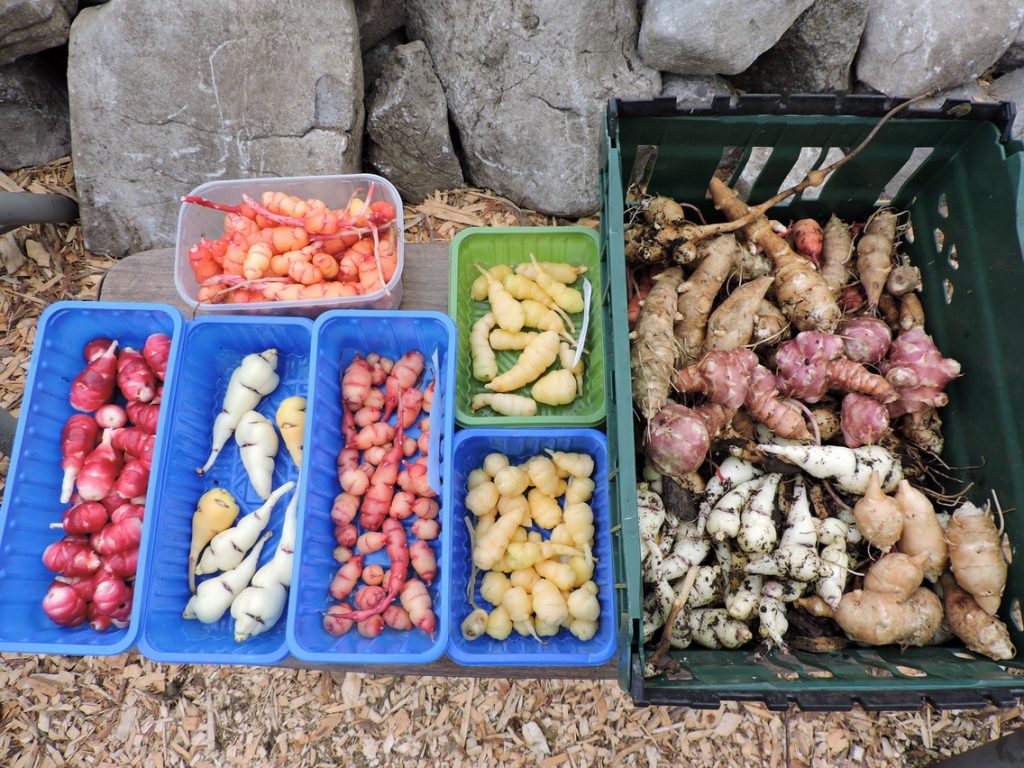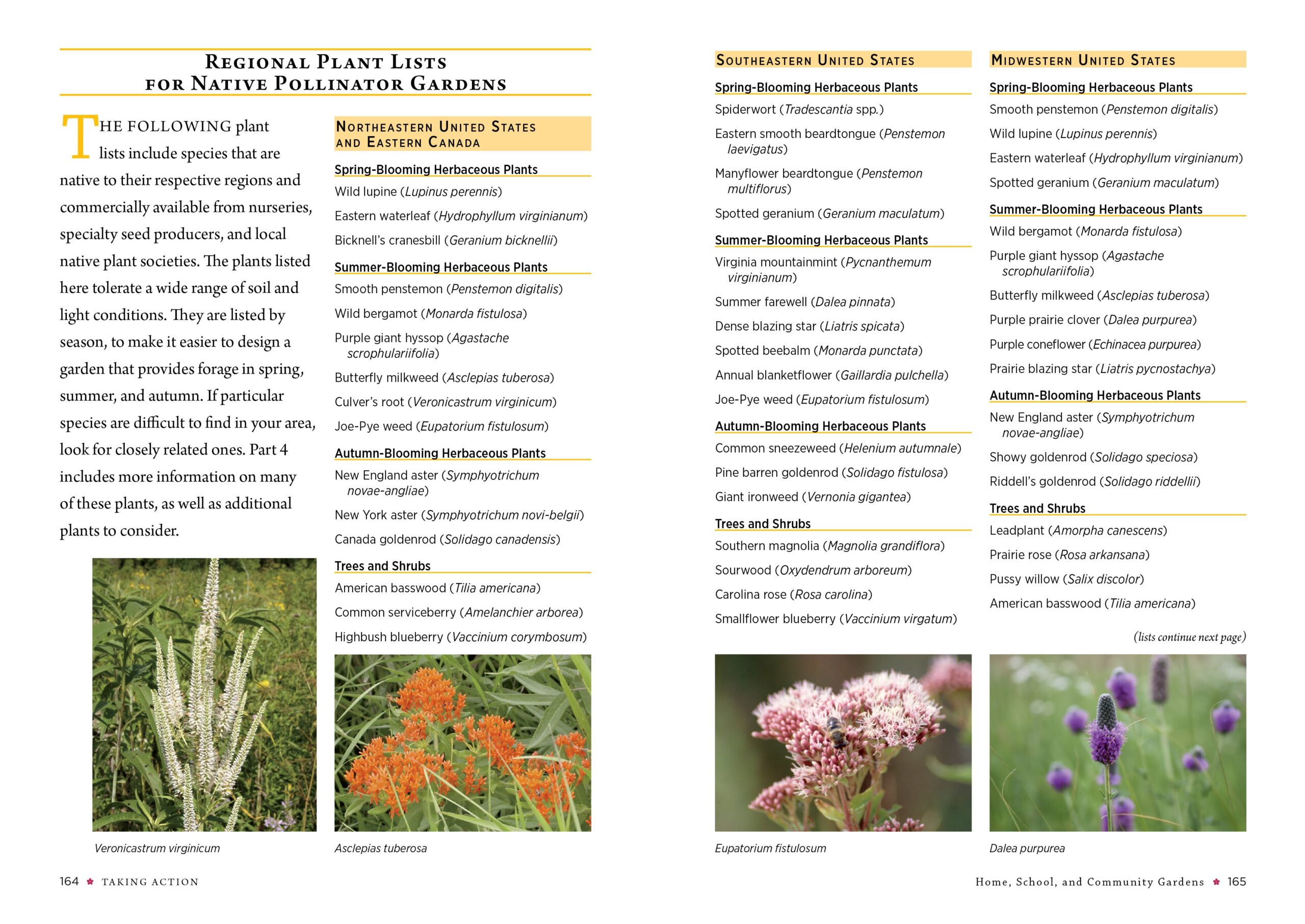
Low-Impact Landscaping: Crafting a Beautiful and Sustainable Oasis for Your Home
As homeowners, we all dream of a beautiful yard, a place to relax, entertain, and connect with nature. But traditional landscaping practices can often have a significant environmental impact, from excessive water usage to the reliance on harmful chemicals. That’s where low-impact landscaping comes in. It’s a design approach that prioritizes sustainability, minimizing environmental footprint while still delivering a stunning and functional outdoor space. This guide will delve into the world of low-impact landscaping, providing you with the knowledge and inspiration to transform your yard into an eco-friendly haven.
What is Low-Impact Landscaping?
Low-impact landscaping, also known as sustainable landscaping or eco-friendly landscaping, is a holistic approach to designing and maintaining your outdoor space with a focus on minimizing negative environmental effects. It’s about working with nature, not against it. This means making choices that conserve resources, protect local ecosystems, and promote biodiversity. It’s about creating a yard that is not only visually appealing but also benefits the environment and supports a healthy planet.
This approach contrasts sharply with conventional landscaping, which often relies on practices that can be detrimental to the environment. This includes:
- Heavy water usage: Overwatering lawns and plants is a common problem.
- Chemical fertilizers and pesticides: These can contaminate soil and water sources.
- Fossil fuel-powered equipment: Lawnmowers, leaf blowers, and other equipment contribute to air pollution.
- Monoculture plantings: Large areas of a single plant type can reduce biodiversity and make the landscape more vulnerable to pests and diseases.
- Wasteful practices: Such as excessive pruning and the disposal of green waste in landfills.
Low-impact landscaping addresses these issues by promoting practices like water conservation, using organic methods, and choosing native plants. The goal is to create a beautiful and functional outdoor space that is also environmentally responsible.
Benefits of Low-Impact Landscaping
Embracing low-impact landscaping offers a wealth of benefits, both for you and the environment. Here are some of the key advantages:
- Environmental Sustainability: The core of low-impact landscaping is its commitment to environmental protection. This includes conserving water, reducing pollution, and supporting biodiversity.
- Water Conservation: One of the most significant benefits is the reduction in water consumption. By using drought-tolerant plants, efficient irrigation systems, and rainwater harvesting, you can significantly decrease your water bill and reduce your reliance on municipal water sources.
- Reduced Chemical Use: Low-impact landscaping emphasizes the use of organic fertilizers and natural pest control methods, which eliminates the need for harsh chemicals that can harm the environment and human health.
- Improved Soil Health: Healthy soil is the foundation of a thriving landscape. Low-impact practices, such as composting and mulching, improve soil structure, fertility, and water retention.
- Enhanced Biodiversity: By planting native plants, you create habitat for local wildlife, including birds, butterflies, and beneficial insects. This increases biodiversity and contributes to a healthier ecosystem.
- Cost Savings: While there may be some initial investment, low-impact landscaping can save you money in the long run through reduced water bills, lower fertilizer and pesticide costs, and decreased maintenance requirements.
- Increased Property Value: Sustainable landscaping is becoming increasingly popular, and it can enhance the curb appeal and market value of your home.
- Healthier Living Environment: By eliminating harmful chemicals and promoting a natural environment, low-impact landscaping creates a healthier and more enjoyable space for you and your family.
- Reduced Maintenance: Once established, low-impact landscapes often require less maintenance than traditional lawns. Drought-tolerant plants need less watering, and organic practices reduce the need for mowing and fertilizing.
Key Principles of Low-Impact Landscaping
Implementing low-impact landscaping involves adopting several key principles. Understanding these principles is essential for creating a sustainable and beautiful outdoor space:
- Water Conservation:
- Choose drought-tolerant plants: Select plants that are well-suited to your local climate and require minimal watering.
- Install efficient irrigation systems: Use drip irrigation or soaker hoses to deliver water directly to plant roots, minimizing water waste.
- Harvest rainwater: Collect rainwater in barrels or cisterns for irrigation.
- Group plants with similar water needs: This makes watering more efficient.
- Mulch: Apply a layer of mulch around plants to retain moisture in the soil.
- Soil Health:
- Improve soil structure: Amend your soil with compost, organic matter, and other soil amendments to improve drainage and fertility.
- Compost: Create your own compost pile to recycle yard waste and create nutrient-rich soil.
- Mulch: Apply mulch to suppress weeds, retain moisture, and improve soil health.
- Avoid compaction: Minimize foot traffic on your soil and avoid using heavy machinery.
- Native Plant Selection:
- Choose native plants: Native plants are adapted to your local climate and require less water, fertilizer, and pesticides than non-native plants.
- Consider plant communities: Group plants together that thrive in similar conditions and support local wildlife.
- Research local nurseries: Look for nurseries that specialize in native plants.
- Integrated Pest Management (IPM):
- Identify pests and diseases: Before taking any action, identify the specific problem.
- Use natural pest control methods: Encourage beneficial insects, such as ladybugs and lacewings, to control pests.
- Use organic pesticides as a last resort: If necessary, use organic pesticides sparingly and only when the problem is severe.
- Promote plant health: Healthy plants are less susceptible to pests and diseases.
- Reduce Waste:
- Compost yard waste: Recycle grass clippings, leaves, and other yard waste in a compost pile.
- Reduce lawn size: Consider replacing some of your lawn with low-maintenance alternatives, such as groundcovers or native plant beds.
- Recycle: Recycle any materials you can, such as plastic pots and containers.
- Minimize Pollution:
- Use organic fertilizers: Avoid synthetic fertilizers that can pollute water sources.
- Use hand tools: Whenever possible, use hand tools instead of gas-powered equipment.
- Dispose of waste properly: Avoid dumping yard waste in waterways or other sensitive areas.
Low-Impact Landscaping Techniques to Implement
There are many practical techniques you can use to implement low-impact landscaping in your yard. Here are some ideas to get you started:
- Xeriscaping: This is a landscaping method that uses drought-tolerant plants and efficient irrigation to conserve water. It’s particularly well-suited for arid and semi-arid climates, but it can be adapted to any region.
- Rain Gardens: These are shallow depressions planted with native plants that collect and filter rainwater runoff from roofs, driveways, and other hard surfaces. Rain gardens help reduce flooding, filter pollutants, and replenish groundwater.
- Permeable Paving: This type of paving allows water to soak into the ground, rather than running off into storm drains. It can be used for patios, walkways, and driveways.
- Composting: Create a compost pile to recycle yard waste and kitchen scraps, turning them into nutrient-rich soil amendment.
- Mulching: Apply a layer of mulch around plants to retain moisture, suppress weeds, and improve soil health.
- Using Native Plants: Native plants are adapted to your local climate and require less water, fertilizer, and pesticides than non-native plants.
- Creating a Pollinator Garden: Plant a variety of flowers that attract bees, butterflies, and other pollinators. This helps support local wildlife and contributes to a healthier ecosystem.
- Reducing Lawn Size: Consider replacing some of your lawn with low-maintenance alternatives, such as groundcovers or native plant beds. Lawns require a lot of water, fertilizer, and mowing, so reducing their size can significantly reduce your environmental footprint.
- Using Organic Fertilizers and Pest Control: Avoid synthetic fertilizers and pesticides, which can harm the environment and human health. Instead, use organic alternatives, such as compost tea and insecticidal soap.
- Rainwater Harvesting: Install rain barrels or cisterns to collect rainwater for irrigation. This can significantly reduce your water bill and conserve water resources.
Choosing the Right Plants for Low-Impact Landscaping
Selecting the right plants is crucial for successful low-impact landscaping. Here are some tips to help you choose the best plants for your yard:
- Consider Your Climate: Choose plants that are well-suited to your local climate, including temperature, rainfall, and sunlight.
- Choose Native Plants: Native plants are adapted to your local climate and require less water, fertilizer, and pesticides than non-native plants. They also provide habitat for local wildlife.
- Assess Your Soil: Determine your soil type (sandy, clay, etc.) and choose plants that thrive in those conditions. You may need to amend your soil to improve its drainage and fertility.
- Consider Sunlight and Shade: Observe how much sunlight your yard receives throughout the day and choose plants that can tolerate those conditions.
- Think About Maintenance: Choose plants that are low-maintenance and don’t require a lot of pruning, fertilizing, or watering.
- Consider the Size and Shape of Your Yard: Choose plants that are appropriate for the size and shape of your yard. Avoid planting trees that will outgrow your space.
- Visit Local Nurseries: Talk to the staff at your local nurseries. They can provide valuable information about the best plants for your area.
- Research Plant Communities: Group plants together that thrive in similar conditions and support local wildlife.
- Look for Plants That Provide Multiple Benefits: Choose plants that provide food, shelter, and nesting sites for wildlife, as well as beauty and fragrance.
- Consider Different Textures and Colors: Create a visually appealing landscape by using a variety of plants with different textures, colors, and forms.
Designing Your Low-Impact Landscape
Designing a low-impact landscape involves careful planning and consideration of your site conditions and your goals. Here’s a step-by-step guide to help you create a beautiful and sustainable outdoor space:
- Assess Your Site:
- Evaluate your existing landscape: Take inventory of your current plants, soil conditions, drainage patterns, and sunlight exposure.
- Identify any problem areas: Note areas that are prone to erosion, flooding, or excessive water usage.
- Set Your Goals:
- Determine your priorities: Decide what you want to achieve with your landscape, such as water conservation, attracting wildlife, or creating a relaxing outdoor space.
- Consider your lifestyle: Think about how you will use your outdoor space and what features you need, such as a patio, a play area, or a vegetable garden.
- Create a Design Plan:
- Sketch a basic layout: Draw a rough sketch of your yard, including existing features, such as trees, buildings, and walkways.
- Plan for different zones: Divide your yard into different zones based on their function, such as a patio area, a lawn area, and a planting bed area.
- Choose plants: Select plants that are well-suited to your local climate and your design goals. Consider the size, shape, and color of the plants, as well as their water requirements and maintenance needs.
- Plan for irrigation: Determine how you will water your plants, such as with a drip irrigation system or a soaker hose.
- Consider hardscaping: Plan for any hardscaping features, such as patios, walkways, and retaining walls. Choose materials that are environmentally friendly and durable.
- Implement Your Design:
- Prepare the soil: Amend your soil with compost and other soil amendments to improve its drainage and fertility.
- Install any hardscaping features: Install patios, walkways, and retaining walls.
- Plant your plants: Plant your plants according to your design plan. Be sure to water them regularly, especially during the first few weeks after planting.
- Install your irrigation system: Install your drip irrigation system or soaker hoses.
- Mulch your plants: Apply a layer of mulch around your plants to retain moisture, suppress weeds, and improve soil health.
- Maintain Your Landscape:
- Water your plants regularly: Water your plants according to their water requirements. Avoid overwatering or underwatering.
- Fertilize your plants: Use organic fertilizers to provide your plants with the nutrients they need.
- Prune your plants: Prune your plants regularly to maintain their shape and health.
- Control weeds: Hand-pull weeds or use organic weed control methods.
- Monitor for pests and diseases: Inspect your plants regularly for pests and diseases. Use organic pest control methods as needed.
Common Mistakes to Avoid in Low-Impact Landscaping
While low-impact landscaping is a rewarding endeavor, it’s essential to avoid some common pitfalls to ensure your success:
- Overwatering: The biggest mistake is often overwatering. Monitor your plants and soil moisture carefully to avoid this issue.
- Using Excessive Fertilizer: Over-fertilizing can damage plants and pollute water sources. Stick to organic fertilizers and follow the recommended application rates.
- Planting the Wrong Plants: Choosing plants that are not suited to your climate or soil conditions will lead to problems. Research the plants you are considering carefully.
- Ignoring Soil Health: Healthy soil is crucial for a thriving landscape. Neglecting soil health can lead to poor plant growth and other problems.
- Using Harsh Chemicals: Avoid using synthetic fertilizers, pesticides, and herbicides, which can harm the environment and human health.
- Not Planning Ahead: Failing to plan your landscape design carefully can lead to costly mistakes. Take the time to assess your site, set your goals, and create a detailed design plan.
- Not Maintaining Your Landscape: Even low-maintenance landscapes require some maintenance. Neglecting your landscape will lead to problems.
- Not Considering Drainage: Poor drainage can lead to standing water and other problems. Ensure that your landscape has adequate drainage.
- Not Educating Yourself: Low-impact landscaping involves learning new techniques and practices. Do your research and learn as much as you can.
Low-Impact Landscaping for Different Environments
Low-impact landscaping is adaptable and can be tailored to various environments. Here’s a look at how it can be applied in different settings:
- Urban Environments:
- Green Roofs: Install green roofs to reduce stormwater runoff and create habitat.
- Vertical Gardens: Utilize vertical gardens to maximize space and add greenery to walls.
- Container Gardening: Grow plants in containers on balconies, patios, and rooftops.
- Suburban Environments:
- Xeriscaping: Reduce water usage by using drought-tolerant plants.
- Rain Gardens: Capture and filter rainwater runoff.
- Native Plant Gardens: Support local wildlife and reduce the need for pesticides.
- Rural Environments:
- Large-Scale Native Plantings: Restore natural ecosystems with native plants.
- Riparian Buffers: Plant trees and shrubs along waterways to protect water quality.
- Wildlife Habitats: Create habitats for birds, pollinators, and other wildlife.
- Coastal Environments:
- Salt-Tolerant Plants: Choose plants that can withstand salt spray and sandy soil.
- Dune Restoration: Protect and restore coastal dunes.
- Water-Wise Irrigation: Use efficient irrigation systems to conserve water.
Resources for Low-Impact Landscaping
Numerous resources are available to help you learn more about low-impact landscaping and implement sustainable practices in your yard. Here are some helpful sources:
- Local Nurseries: Local nurseries often offer workshops, classes, and expert advice on low-impact landscaping. They can also help you choose the right plants for your area.
- Cooperative Extension Services: Your local cooperative extension service provides educational resources and programs on sustainable landscaping practices.
- The Xerces Society: This organization specializes in invertebrate conservation and offers resources on creating pollinator gardens and using native plants.
- The Lady Bird Johnson Wildflower Center: This organization provides information on native plants and landscaping for conservation.
- Your Local Government: Your local government may offer rebates or incentives for water conservation or sustainable landscaping practices.
- Books and Online Resources: There are many books and websites that provide information on low-impact landscaping. Do some research to find resources that are relevant to your area.
Conclusion: Embrace the Beauty and Sustainability of Low-Impact Landscaping
Low-impact landscaping is more than just a trend; it’s a responsible and rewarding way to create a beautiful and sustainable outdoor space. By embracing the principles of water conservation, soil health, native plant selection, and integrated pest management, you can transform your yard into an eco-friendly haven that benefits both you and the environment. It’s a journey that allows you to connect with nature, reduce your environmental footprint, and enjoy a healthier and more vibrant living space. So, take the first step today, and begin your journey towards a more sustainable and beautiful landscape!

